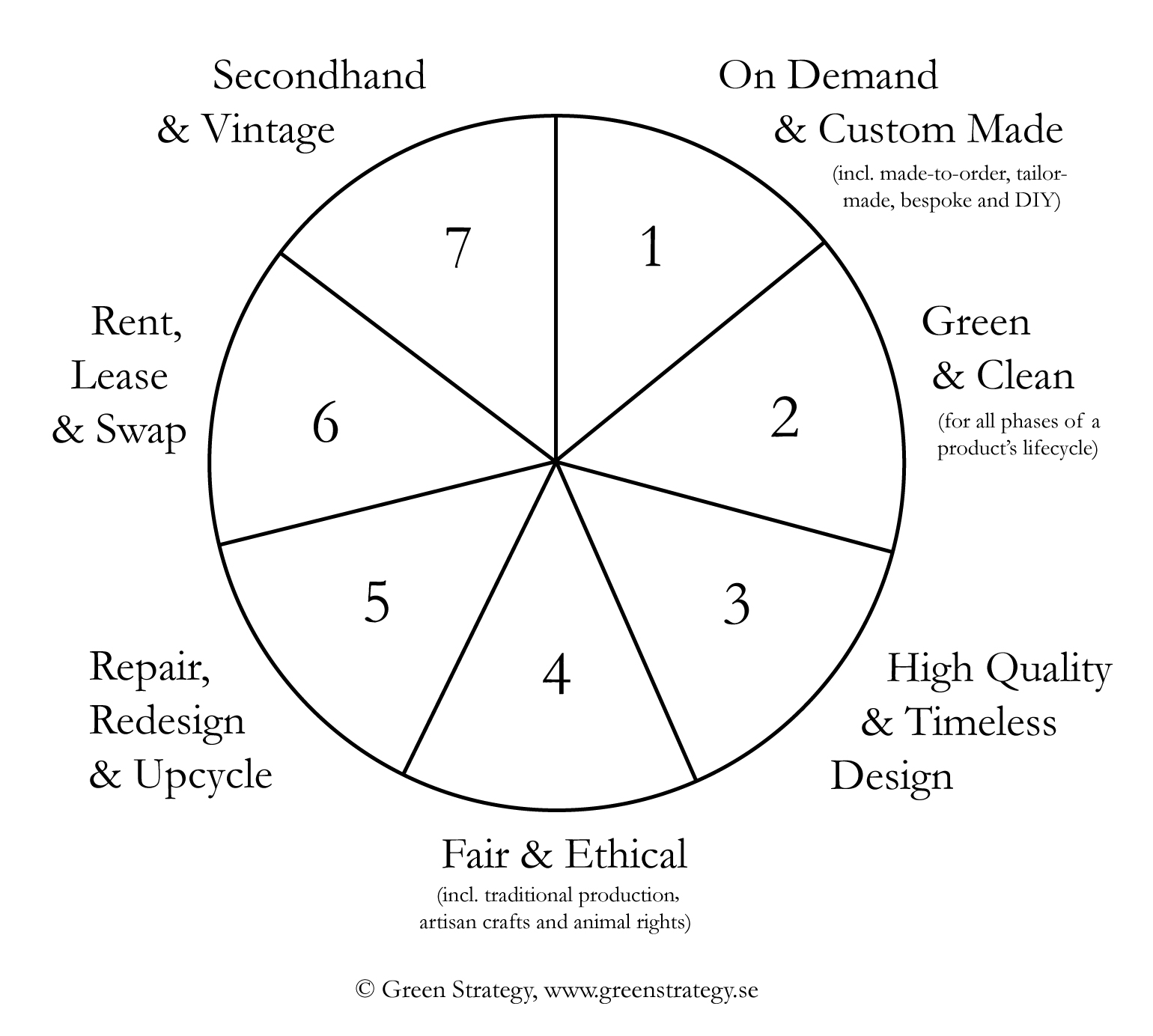Discover Cape Town Sustainable Fashion Boutiques as well as Brands
Discover Cape Town Sustainable Fashion Boutiques as well as Brands
Blog Article
Stay Ahead of the Contour by Checking Out Ingenious Fashion Patterns
In a market as vibrant as style, remaining in advance entails greater than simply complying with current fads-- it demands an expedition of innovation. Smart textiles, for instance, are transforming garments into functional work of arts, while 3D printing is reinventing design processes with its personalized, waste-reducing capacities. As sustainability comes to be a cornerstone, developments like eco-friendly products and round style methods are improving ecological duty - Cape Town Sustainable Fashion. Furthermore, the convergence of innovation and style declares a new period of customer engagement. Just how, then, can these arising trends redefine the future of fashion, and what effects do they hold for brands seeking to prosper in this developing landscape?

Accepting Smart Textiles
In recent times, the fashion market has actually experienced a transformative change with the combination of wise fabrics, a sophisticated advancement that mixes innovation with textile. This evolution stands for not only a fusion of visual appeals and performance yet also a considerable leap towards sustainability and personalization in vogue. Smart fabrics, likewise recognized as e-textiles, embed sophisticated electronic devices such as sensors and conductive threads within the material, allowing garments to interact with the wearer or the environment.
These textiles are created to check physiological specifications, such as heart rate or body temperature level, giving real-time health analytics. Beyond wellness applications, smart fabrics are additionally being used for adaptive clothing, which can transform color or pattern in response to environmental stimuli, therefore offering a dynamic fashion experience.
Additionally, the growth of energy-harvesting fabrics that generate power from activity or sunshine is paving the way for self-sufficient wearable technology. This development is appealing to eco aware customers and developers aiming to decrease the ecological footprint of style. As r & d in this field breakthrough, smart fabrics are anticipated to become increasingly widespread, reshaping the landscape of modern-day style with their multifunctional capabilities.
The Surge of 3D Printing
Transforming the manufacturing landscape, 3D printing has actually emerged as a game-changer in the style sector. This sophisticated innovation has allowed developers to push the borders of imagination, creating intricate and tailored garments that were formerly unimaginable. By leveraging digital style and additive production, 3D printing helps with the creation of complex geometries and patterns, permitting developers to explore new structures and structures.
A noteworthy advantage of 3D printing in vogue is its capacity to produce on-demand, minimizing waste and reducing supply requirements. This performance not just enhances production procedures but additionally permits rapid prototyping, allowing developers to bring their visions to life in a shorter timeframe. In addition, 3D printing sustains modification to a degree unparalleled by traditional techniques, supplying customized fits and unique designs customized to private customer choices.
The rise of 3D printing has actually additionally democratized fashion, making it obtainable to arising designers that can currently fabricate high-grade pieces without significant economic investment in conventional manufacturing infrastructure. As modern technology remains to development, the fashion business is poised to harness the complete capacity of 3D printing, checking out brand-new materials and techniques that will unquestionably redefine just how style is conceived and created.
Lasting Fashion Advancements
As the style market comes to grips with the pressing demand for ecological duty, sustainable style advancements have emerged at the leading edge of transformative change. The growing understanding of environmental effect has actually fueled a change towards even more eco-conscious methods and products. Designers and brand names are currently focusing on sustainability, incorporating techniques that minimize waste and reduce carbon footprints.
One considerable growth is the increase of circular style, which stresses recycling and upcycling to expand the lifecycle of garments. This method not just lowers waste but additionally motivates customers to take on a much more conscious technique to apparel consumption.
One more advancement hinges on the fostering of cutting-edge dyeing techniques that make use of waterless procedures or all-natural dyes, thus reducing the large quantities of water and chemicals typically utilized in fabric dyeing. Moreover, innovations in biotechnology have actually led to the production of lab-grown natural leather and materials, providing cruelty-free and eco friendly choices to standard materials. Via these pioneering initiatives, the apparel industry is making significant strides towards a much more sustainable future.

Tech-Integrated Apparel
Tech-integrated clothing represents an innovative blend of style and modern technology, improving how individuals connect with their clothes. This cutting-edge domain name is noted by the inclusion of wise textiles and embedded digital components, boosting both functionality and visual charm. From physical fitness trackers installed in sports apparel to heated jackets controlled via smartphone apps, tech-integrated clothing uses customers unmatched comfort and flexibility.
Pioneering brands are driving this pattern, concentrating on creating garments that react to ecological stimulations or customer commands. For instance, some garments can change color or pattern in feedback to temperature level shifts, while others integrate biometric sensing units to monitor health metrics like heart rate or stress levels. The seamless assimilation of click this innovation into fabrics also reaches environmental sustainability, with efforts to develop self-cleaning textiles or garments that readjust to climate condition, thus decreasing the requirement for several layers.
Furthermore, the introduction of wearable innovation is not simply limited to garments however reaches accessories like watches and eyewear, further widening the extent of tech-integrated style. As the industry remains to introduce, the possibility for modification and personalization in garments grows, using customers distinct, tech-enhanced fashion experiences that satisfy their individual demands go to website and preferences.
Future of Virtual Fashion
Recently, the future of digital style has actually become a transformative pressure within the industry, leveraging innovations in digital innovation to redefine how style is produced, experienced, and consumed. By integrating augmented reality (AR), online fact (VR), and 3D style tools, developers can now craft immersive and interactive experiences that go beyond traditional fashion limits. Digital fashion permits the creation of garments that exist entirely in digital environments, providing unlimited opportunities for technology without the restrictions of physical production.
This electronic change not just provides chances for imaginative expression but also addresses sustainability concerns inherent in standard style practices. Cape Town Sustainable Fashion. By getting rid of the requirement for physical sources, digital style reduces waste and reduces carbon footprints. Moreover, the surge of online fashion straightens with the boosting customer need for unique and tailored experiences, as digital garments can be tailored and customized to individual preferences easily

Verdict
The garment industry's future hinge on the assimilation of sustainable methods and innovative technologies - Cape Town Sustainable Fashion. Smart textiles and tech-integrated apparel are improving capability, while 3D printing offers possibilities for personalization and waste decrease. Sustainable style, via environmentally friendly products and circular techniques, demonstrates a commitment to environmental stewardship. In addition, online fashion is poised to redefine customer interactions. Adapting to these fads is crucial for brand names seeking to remain affordable and appropriate in this rapidly progressing landscape.
In recent years, the fashion sector has actually seen a transformative shift with the assimilation of clever fabrics, a cutting-edge advancement that blends innovation with material.As the fashion the original source industry grapples with the pushing requirement for environmental obligation, sustainable fashion technologies have actually emerged at the leading edge of transformative change.In current years, the future of virtual style has actually arised as a transformative pressure within the market, leveraging advancements in digital technology to redefine exactly how style is developed, experienced, and consumed. The increase of digital style aligns with the enhancing customer demand for individualized and unique experiences, as online garments can be customized and customized to individual preferences with convenience.
The style industry's future lies in the assimilation of ingenious innovations and lasting practices.
Report this page